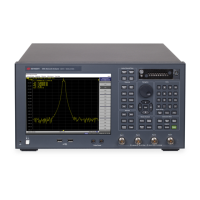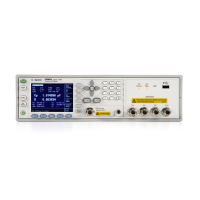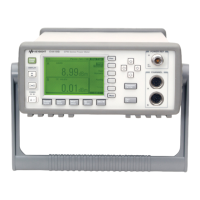E5071C
904
The 8753ES allows a frequency array or module information to be read,
but these functions are not supported on the E5071C.
Trigger System
The trigger system detects the signal for starting a measurement (trigger)
and controls decisions on whether to measure or not measure.
On the 8753ES, the trigger state is available for the pair of a main channel
and an auxiliary channel (two pairs: channels 1 and 3 and channels 2 and
4). For each pair, three states are available: Hold, Waiting for Trigger, and
Measurement. When a trigger event occurs, one pair of channels in the
Waiting for Trigger state are put into a sweep operation. If the other pair is
also Waiting for Trigger, then the next trigger event puts it into sweep
operation as well. When the sweep condition coupling channels is turned
on, the Hold, Waiting for Trigger, and Measurement states are common to
all channels. In this case, when a trigger event occurs in the Waiting for
Trigger state, all channels are put into sweep operation. For example,
when you set channel 1 and 2 to uncouple and sweep each channel, you
need to set each channel to Hold state and make trigger events to each
channel.
On the E5071C, the trigger system involves states of the entire system and
those of each of the channels. Since a trigger event is common to all
channels, three system-wide states exist: Hold, Waiting for Trigger, and
Measurement. On the other hand, two states exist for each channel: Idle
and Startup. For a channel in an Idle state, measurement is not performed
at all, while for a channel in Startup state, measurements are started in
sequence after an event occurs. When all channels are in an Idle state, the
E5071C is in Hold state when viewed as an entire system. If even one
Startup state channel exists, the E5071C enters the Waiting for Trigger or
Measurement state. Upon a transition from the Waiting for Trigger to the
Measurement state, measurement is performed on channels put into
Startup state starting with the channel with the smallest channel number.
Data Flow
The data flow in the 8753ES is shown in 8753ES Data Flow while the flow
in the E5071C is shown in E5071C Data Flow. As described in Reading
Writing Data, the types of data you can read/write using the 8753ES differ
from those you can read/write using the E5071C.
8753ES Data Flow

